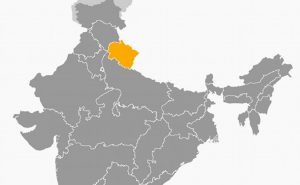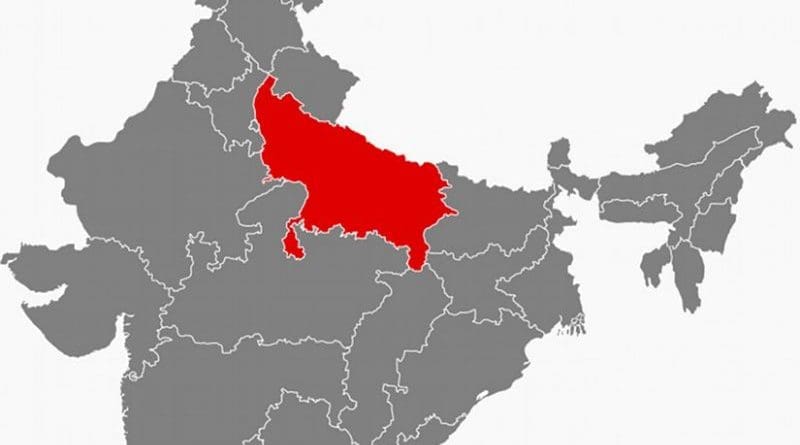India: A Clear Mandate In Uttar Pradesh And Uttarakhand – Analysis
By IPCS
By Prerana Priyadarshi and Sarral Sharma*
On March 11, the Bharatiya Janata Party (BJP) won a clear mandate in the legislative assembly elections in Uttar Pradesh (UP) and Uttarakhand. In UP, the BJP single-handedly won 311 of 403 seats, and with allies, Apna Dal (Soneylal) and Suheldev Bhartiya Samaj Party (SBSP), secured a total of 325 seats. In Uttarakhand, it bagged 56 of 70 seats.
The BJP’s emphatic victory in both the states is likely to impact the upcoming presidential election and the states as well as the 2019 Lok Sabha polls. These results will also change the dynamics for the National Democratic Alliance (NDA) government in the Rajya Sabha. It will further embolden the ‘Modi factor’ – which began to be doubted following the BJP’s defeat in the 2015 Bihar election – and may also pacify the recent criticism over the demonetisation issue.
UP Poll Arithmetic
The BJP’s performance in UP is almost a repeat of the 2014 general election. The aggregate vote share of the BJP and its allies was 41.4 per cent in this election – a marginal decline of 2.2 per cent compared to the 43.6 per cent from 2014. However, the party’s vote share has witnessed a sharp increase of 24 per cent, and has risen to 39.6 per cent in 2017, from 15 per cent in 2012. Similarly, its seats have increased tremendously from 47 in 2012 to 312 in 2017.
Apart from the ‘Modi’ factor, the BJP’s surge in UP is largely attributed to the ‘social engineering’ it devised to woo the non-Yadav Other Backward Caste (OBCs) voters; the non-Jatav Dalits; and other non-Muslim communities. The party’s poll strategy suggests it targeted an estimated 55-60 per cent of the population, focussing on issues such as corruption, law and order, and development, among others. The BJP’s alliance partners in UP – AD(S) and (SBSP) – further aided in consolidating the votes of non-Yadav OBC communities such as the Kurmis, the Rajbhars and the Patels.
Evidently, the Samajwadi Party (SP)-Indian National Congress (Congress) alliance failed to convert their combined 28 per cent vote share into seats. The alliance had been formed to repeat the 2015 Bihar election arithmetic to counter the BJP’s surge in the state. However, factors such as the anti-incumbency sentiment, infighting over the leadership within the SP and the weaker state leadership of the Congress worked against the alliance.
Of the total 403 seats, the SP contested from 298 and the Congress from the remaining 105 in 2017; and although the SP had single-handedly won the majority with a vote share of 29 per cent in 2012, and had won 22.2 per cent in 2014 and 21.8 per cent in 2017, its alliance with the Congress seems to have yielded little benefit in 2017. For the Congress, it has been a downward trend: 11.6 per cent in 2012; 7.5 per cent in 2014; and 6.2 per cent in 2017.
For the Bahujan Samaj Party (BSP), the vote share increased from 19.6 per cent in 2014 general election to 22.2 per cent in 2017; but down from 26 per cent in 2012 assembly election. The BSP’s Dalit-Muslim stratagem failed to convert the vote share into seats, and ended up winning merely 19. Conversely, the strategy appears to have benefited the BJP more in the minority-dominated seats where a likely Muslim vote split took place between the BSP and the SP. Moreover, former BSP leaders like Swami Prasad Maurya, Jugul Kishore and Dinanath Bhaskar, among others, left the party and won as BJP candidates in this election.
More importantly, the BSP, now with just 19 lawmakers in UP, might struggle to get Mayawati re-elected to the Rajya Sabha when her term ends in August 2018.
Uttarakhand Debacle

Chief Minister Harish Rawat’s defeat on both seats he contested (Kichha and Haridwar-rural) indicates a strong anti-incumbency sentiment against the then ruling Congress in Uttarakhand. Congress’s defeat in Uttarakhand can also be attributed to other internal and external factors. First, Rawat has been criticised for antagonising senior Congress leaders such as Vijay Bahuguna, Harak Singh Rawat, Satpal Maharaj and Yashpal Arya – who subsequently defected and joined the BJP. Second, the BJP raised the corruption issue mainly highlighting the liquor licence allotment; mining scams; and Rawat’s alleged sting operation video. Lastly, the ‘Modi factor’ may have worked in the BJP’s favour as the party won all five Lok Sabha seats with a total vote share of 56 per cent.
In the absence of senior leaders other than Rawat and Indira Hridayesh, the Congress failed to consolidate its electoral base. Interestingly, the Congress polled 33.5 per cent in 2017, which is only a meagre 0.7 per cent decline from 34.02 per cent in the 2012 assembly election. Meanwhile, the BJP witnessed a near 13 per cent surge from 33.38 per cent in 2012 to 46.5 per cent in 2017. The BJP’s seat share increase from 31 in 2012 to 56 in 2017, which suggests that it effectively sliced the vote share of other regional parties.
Conclusion
With the BJP’s massive gains in the recent elections, speculations are already rife regarding the formation of a new Mahagathbandan (grand alliance), on the lines of the Rashtriya Janata Dal (RJD)-Janta Dal United (JDU)-Congress combine in Bihar, before the 2019 Lok Sabha polls. However, the foundation of such an alliance will depend on the outcome of the assembly elections in Gujarat and Karnataka, scheduled for late 2017, and 2018 respectively. It will be useful to study how the regional parties, with their varied political ideologies, coalesce at the national level to challenge the mighty NDA. Until then, the BJP is likely to exploit the apparent ‘Modi wave’ to expand its political presence across the country.
* Prerana Priyadarshi and Sarral Sharma
Researchers, IReS, IPCS

